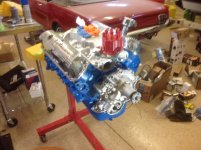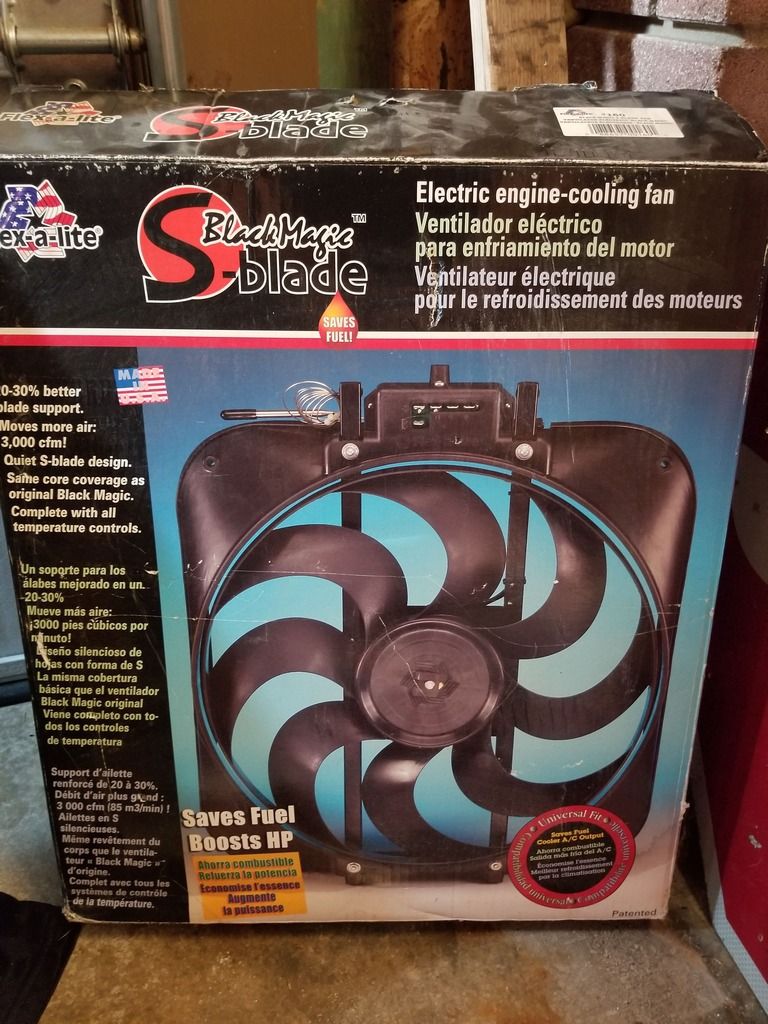From a overheating perspective, if I am going to overheat it is when I am sitting in traffic or riding on a trail.
Which is of course where an electric fan excels. And another reason I still like them myself.
Airflow at 45 mph plus should almost be enough on its own to cool the engine let alone using a fan. So as mentioned a clutch fan would make more sense than the others.
Sort of... In theory yes, but in Broncos that are modified, natural air flow through the radiator is sketchy more often than not. After lifts and big tires and maybe even a winch bumper and winch, the high pressure buildup underneath the vehicle at highway speeds is enough to keep air trying to flow through the grill at least partially at bay.
Generically speaking however, you're exactly right. It's just that Broncos weren't designed with very good aerodynamics even when new. Add more height and clearance underneath to build up pressure, and it gets even worse.
How much of that impeding of flow is due to aero, and how much to a rigid fan spinning behind the radiator, I don't think anyone has tested that I remember.
Maybe that would be a good test sometime. Anyone that has a normal cool running Bronco that sees the temperature rise and highway speeds, could disconnect the fan temporarily to see if the temperatures still rise up.
Mine did that at speeds above 70. Stood right at the temperature of the thermostat for 98% of the driving, but would run up another 10 to 20 degrees on long freeway slogs in the summer.
Never thought of pulling the fan for just the heck of it. I was having too much fun to take the time anyway probably. Ahh, the good old days...;D
For me acceleration is the main objective from a performance perspective. Once I hit OD horsepower means little to me. The occasional high RPM while climbing a hill will also be at low speed. The thing I would like answered is when the engine is at high RPMs while accelerating does the fan reduce that pushed back into the seat feeling?
It's probably measurable, but it's likely at such a level as to be hard to feel by the seat of your pants. At least that's my feeling on it.
But we still strive to get rid of as much waste as possible because eventually it all adds up to something you can feel.
A fan alone? Maybe not. But a more efficient fan when put in with other mods, sure. Maybe...
One of the builders told me for an engine with AC and automatic you need to push around 4000 cfm to keep her cool, not the 2400 the electric fan is rated at. I asked how he knew and the reply was "personal experience". He advised to sacrifice HP to the fan for the health of the engine and if I wanted more HP to consider better headers and exhaust or even a new cam. I really can't argue with his logic.
Can't really argue with him either. I wonder at what fan rpm a factory type fan reaches that peak flow? And what is it doing below that?
Just confirmation that a flow test while they were doing the dyno runs would have been a great addition. Might not have been equatable to power loss, but it would have still been good general data.
You'd see that need for higher air flow on some long uphill grade at highway speeds pretty quickly I would think. If you never expect to see that situation however, then it's probably not as critical to have a 4000 cfm mechanical fan. If too much heat was only a problem at trail and traffic speeds, then an electric is still going to pull a hefty amount of air over the radiator.
Remember there are plenty of modern 300 to 450 horsepower vehicles running around with only electric fans. I bet they have much better aerodynamics as a general rule too though.
But there's probably still the argument that there must be a reason full size trucks and some other heavy duty vehicles come with mechanical fans.
Easier and cheaper could certainly be the reasons all by themselves, since the engines are usually facing forward. But there could be others as well.
Anyone know what type of fan a new Corvette or Challenger uses?
Paul












